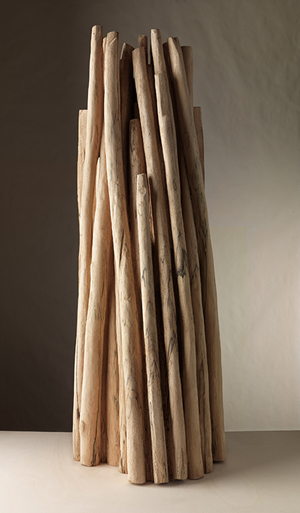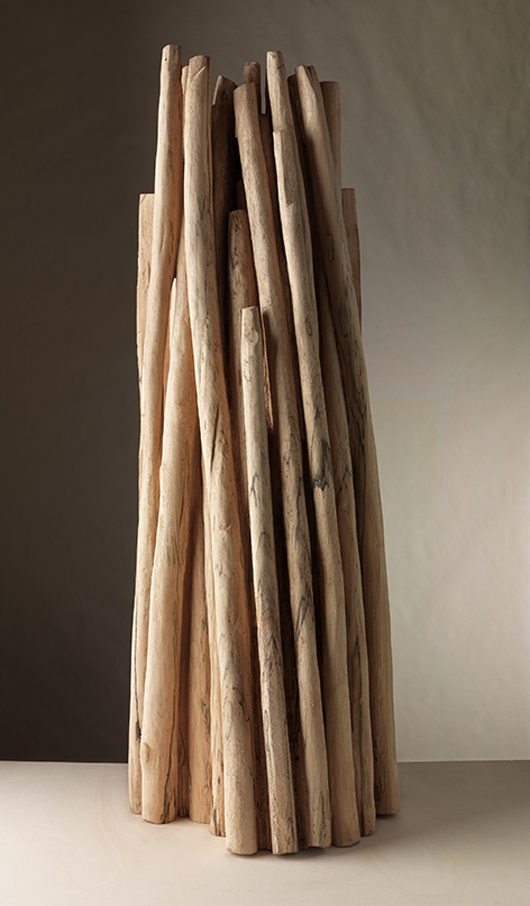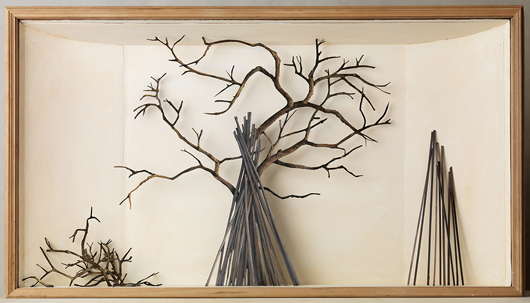
LONDON – Nicola Lazzari’s latest exhibition of drawings and sculpture titled “Cataste” opens at Trinity Fine Art on Thursday, May 10. The inspiration for the new work is the neatly arranged cataste, or stacks, of wooden poles that are seen throughout the Tuscan countryside.
Dotted around fields and vineyards these wooden poles fulfill multiple functions as supports for rows of vines or posts for fencing and a host of other uses to which the farm worker applies them.
This is the third exhibition of Nicola Lazzari’s work at Trinity Fine Art. Earlier shows were “Curiosities” in 2006 and “Letters from Home” in 2008. Lazzari’s works are masterpieces of understatement—gentle small works: deceptively simple but imbued with subtle poetry. In these latest works, the meditative view is both more precise and, at the same time, on an altogether larger scale, yet retaining the contemplative quality of those earlier studies. Lazzari’s ability as a draughtsman, working with both speed and economy, is very evident in this present exhibition.
The current selection of works is based on studies of trees as well as the stacks of wooden posts and are for the most part drawings, with some sculptures. Nicola Lazzari became fascinated with these little piles of wood, which are “eaten away by exposure to the elements and by use that they have lost every trace of their origins and appear to be fossilized.” He has chosen to depict them, neatly stacked against trees, stripped of their bark and gently aging in the alternate hot and cold weather, awaiting their destined use.
The studies take place in an almost exclusively winter landscape—the trees against which they lean are leafless. This is no accident. Not only do the cataste become more visible in the winter months but it is also the time when the relationship between these sculptural wooden poles and the trees whence they came is at its closest.
The concept behind two particular works bears testament to this relationship: Lime Tree Stack (Castasta di Tiglio) carved out of the trunk of the lime tree itself, and the Display Case (Bacheca), where the castata and the tree are cut out from the same sheet to represent the unity and continuity of things that may appear at first sight to be separate and different.
ADDITIONAL IMAGES OF NOTE




